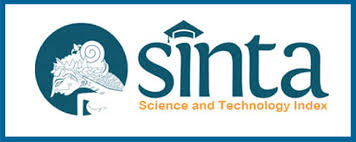Development Of Forensic Hypnosis Assesment Instrument For PTSD Midwifery Student Of Post Practice Learning Field Maternity
DOI:
https://doi.org/10.31290/jpk.v9i2.2033Keywords:
Forensic Hypnosis Assessment Instrument, Post-Traumatic Stress Disorder, Midwifery Students, Practice Learning Field MaternityAbstract
Midwives are very susceptible to experiencing PTSD, but STIKES students never admit to experiencing PTSD after completing the Maternity Field Learning Practice because this is a very sensitive matter so that experience and procedures are needed in the approach. If this is allowed, the PTSD will cause the stress to continue to the level of insanity and suicide. For this reason, a Forensic Hypnosis Assessment Instrument For PTSD is needed to detect PTSD experienced by students after the Maternity Field Learning Practice. This research used R dan D research method involving 2 Expert Validator, 1 Practitioner Validator, and 5 postgraduate students who were willing to be sampled on the instrument limited test. Collecting data using interview sheets. The results of the study were a description of the development of the Forensic Hypnosis Assessment Instrument For PTSD for Midwifery Students Post Maternity Field Learning Practice. Forensic Hypnosis Assessment Instrument For PTSD has good criteria from experts and practitioners. It has a huge potential effect on the detection of PTSD after the Field Learning Practice in Maternity. Forensic Hypnosis Assesment Instrument For PTSD is one of product that could give description, knowledge, and new approach for diagnosing candidate of midwives that ever and being PTSD.
References
Covacevich, Catalina. 2014. “How to select an instrument for assessing student learning”. Washington: Inter-American Development Bank
Ferreira, Dyna Mara Araújo Oliveira dkk. 2018. “Post-traumatic stress disorder and temporomandibular dysfunction: a review and clinical implications”. Brazilian Journal of Pain. 1(1). h 55-59.
Hosizah & Irawati. 2017. Praktik Kerja Lapangan I: Prosedur Pelayanan Rekam Medis Dasar, KKPMIT I dan II. Jakarta: Pusat Pendidikan Sumber Daya Manusia Kesehatan Kementerian Kesehatan.
James, Stella. 2015. “Women’s experiences of symptoms of posttraumatic stress disorder (PTSD) after traumatic childbirth: a review and critical appraisal”. Journal of Arch Womens Ment Health. 18(6). h 761–771.
Kurbano?lu, Namudar ?zzet & Mithat Takunyac?. 2017. “Development And Evaluation Of An Instrument Measuring Anxiety Toward Physics Laboratory Classes Among University Students”. Journal of Baltic Science Education. 16(4). h 592-598.
Leinweber, J, dkk. 2016. “Responses to birth trauma and prevalence of posttraumatic stress among Australian midwives”. Journal of Women Birth. 30(1). h 40-45.
Liu, Juhong Christie, John, Kristen St, Anna M. Bishop Courtier. 2017. “Development and Validation of an Assessment Instrument for Course Experience in a General Education Integrated Science Course”. Journal of Geoscience Educa. 65(4). h 435-454.
Mind. 2018. “Post-traumatic stress disorder (PTSD)”. https://www.mind.org.uk/media/23538921/ptsd-2018.pdf. Diakses tanggal 1 Agustus 2019.
Murphy, Michael L.M, dkk. 2018. “Receiving a hug is associated with the attenuation of negative mood that occurs on days with interporsenel confligth”. Journal of Plus One. 13(10). h 1-17.
Paterline, Brent A. 2016. “Forensic Hypnosis and the Courts”. Journal of Law and Criminal Justice. 4(2). h 1-7.
Pattersan, Jenny. 2019. “Traumatised Midwives: Traumatised Women”. Journal of AIMS. 30(4). h 8-11.
Pratiwi, Citra Ayu, Suci Murti Karini, & Rin Widya Agustin. 2012. Pernedaan Tingkat Post-Traumatic Stress Disorder Ditinjau dari Bentuk Dukungan Emosi Pada Penyintas Erupsi Merapi Usia Remaja dan Dewasa di Sleman, Yogyakarta. Jurnal Wacana. 1 (22). h 86-115.
Rochmad. 2012. “Desain Model Pengembangan Perangkat Pembelajaran Matematika”. Jurnal Kreano. 3(1). h 59-72.
Slade, Pauline, dkk. 2018. “A programme for the prevention of post-traumatic stress disorder in midwifery (POPPY): indications of effectiveness from a feasibility study”. European Journal of Psychotraumatology. 9(1). h 1-11.
Wheatcroft, dkk. 2006. “New directions in forensic hypnosis: facilitating memory with a focused mediation technique”. Contemporary Hypnosis journal. 21(1). Hal. 14-27.
Yoshida, Sachine, dkk. 2020. “Infants Show Physiological Responses Specific to Parental Hugs”. Journal of iScience. 23(4). h. 1-29.





